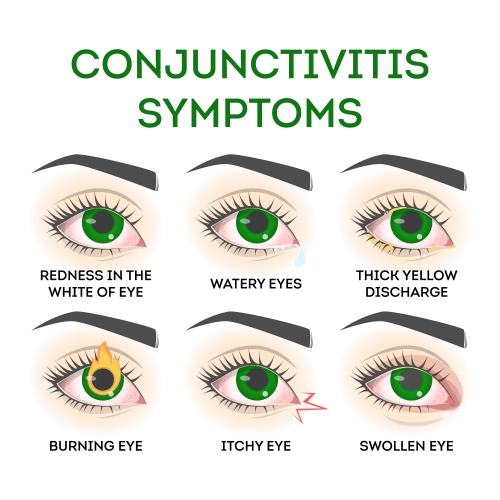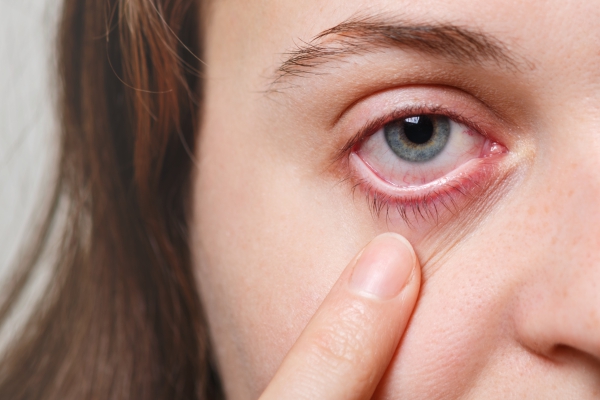Conjunctivitis, Conjunctiva, Red eye, Pink eye, Contagious
Description : Conjunctivitis, also known as pink eye, is a common eye disorder affecting the conjunctiva. The
Article Details :
What is conjunctivitis?
Conjunctivitis, also known as pink eye, is a common eye disorder affecting the conjunctiva. The conjunctiva is a transparent membrane that covers the inner part of your eyelid as well as the white part of your eyeball. When this membrane becomes infected or inflamed, this condition is known as conjunctivitis. It is usually a benign and self-limiting condition.
Conjunctivitis is the most common cause of a red eye and can easily be treated. It is also the most common non-traumatic eye complaint in the emergency department. This eye condition can be classified into infectious and non-infectious conjunctivitis. Conjunctivitis can occur in both adults and children.
What are the causes of conjunctivitis?
Conjunctivitis can be due to infectious or non-infectious causes. Infectious conjunctivitis can further be classified into bacterial and viral conjunctivitis.
Bacterial conjunctivitis
Bacterial conjunctivitis, as the name suggests, is caused by an infection due to bacteria. Some examples include Staphylococcus aureus, Streptococcus pneumoniae, Haemophilus influenza and Moraxella catarrhalis. Staphylococcus aureus is the most common cause among adults while the others are most common among children.
Bacterial conjunctivitis is highly contagious. It can be transmitted by direct contact from one person to another or through contaminated objects or surfaces. This can happen when an infected person has touched his/her eyes and then touched a surface such as a door handle or any other object.
Viral conjunctivitis
Viral conjunctivitis is most commonly caused by adenovirus. This virus is also responsible for common cold. Similar to bacterial conjunctivitis, viral conjunctivitis is also highly contagious. It is transmitted through contact, direct or indirect, with the eye secretions from an infected individual.
Other viruses such as herpes simplex virus, varicella-zoster virus and coronavirus disease 2019 (COVID-19) can also lead to conjunctivitis.
Allergic conjunctivitis
This type of conjunctivitis is caused by airborne allergens, which are particles found in the air that can cause allergy. It occurs when these particles come in contact with your eye. According to the type of allergen, allergic conjunctivitis may occur suddenly, during specific seasons or all throughout the year. When the allergen comes into contact with your eye, it triggers a reaction leading to the release of antibodies which further leads to the release of inflammatory substances in your eye.
Toxic conjunctivitis
This type of conjunctivitis can occur as a result of a chronic inflammation causes by an offending agent. The offending agent may be a medication or a preservative.
What are the risk factors for conjunctivitis?
You are at increased risk of having conjunctivitis if you:
- Have been exposed to allergens
- Have been in close contact with someone with conjunctivitis
- Use contact lenses
What are the symptoms of conjunctivitis?
The main symptom present in all types of conjunctivitis is a red or pink eye. Other symptoms present may vary among the different types of conjunctivitis. These symptoms may include the following:
- Redness
- Watery or mucus discharge from the eye
- Burning sensation in the eye
- Foreign body sensation in the eye often described as sandy
- Morning crusting of the eye
- Thick discharge from the eye which may be yellow, white or green
- Fever
- Swollen nodes in the neck
- Sore throat
- Runny nose
How is the diagnosis of conjunctivitis made?
Your doctor will start by asking you a series of questions to know more about your symptoms. These may include the following questions:
- When did you first notice your symptoms?
- Has anyone in your surrounding experienced the same symptoms?
- How is the discharge from your eye?
- Do you have a history of allergy?
If you experience the following symptoms, your doctor may refer you to an eye specialist:
- Changes in vision
- Inability to keep your eye open
- Increased sensitivity to light
- Severe headaches
- Nausea
- Trauma to the eye
To complete the evaluation, your doctor will examine your eye. There are no specific tests done to make the diagnosis of conjunctivitis. In some rare cases, a sample of your eye discharge may be taken for further examination.
How is conjunctivitis treated?
It is important to make a proper diagnosis for conjunctivitis as the treatment will depend on the cause.
Viral conjunctivitis
The main goal of the treatment is to relieve the bothersome symptoms. Treatment Read more










